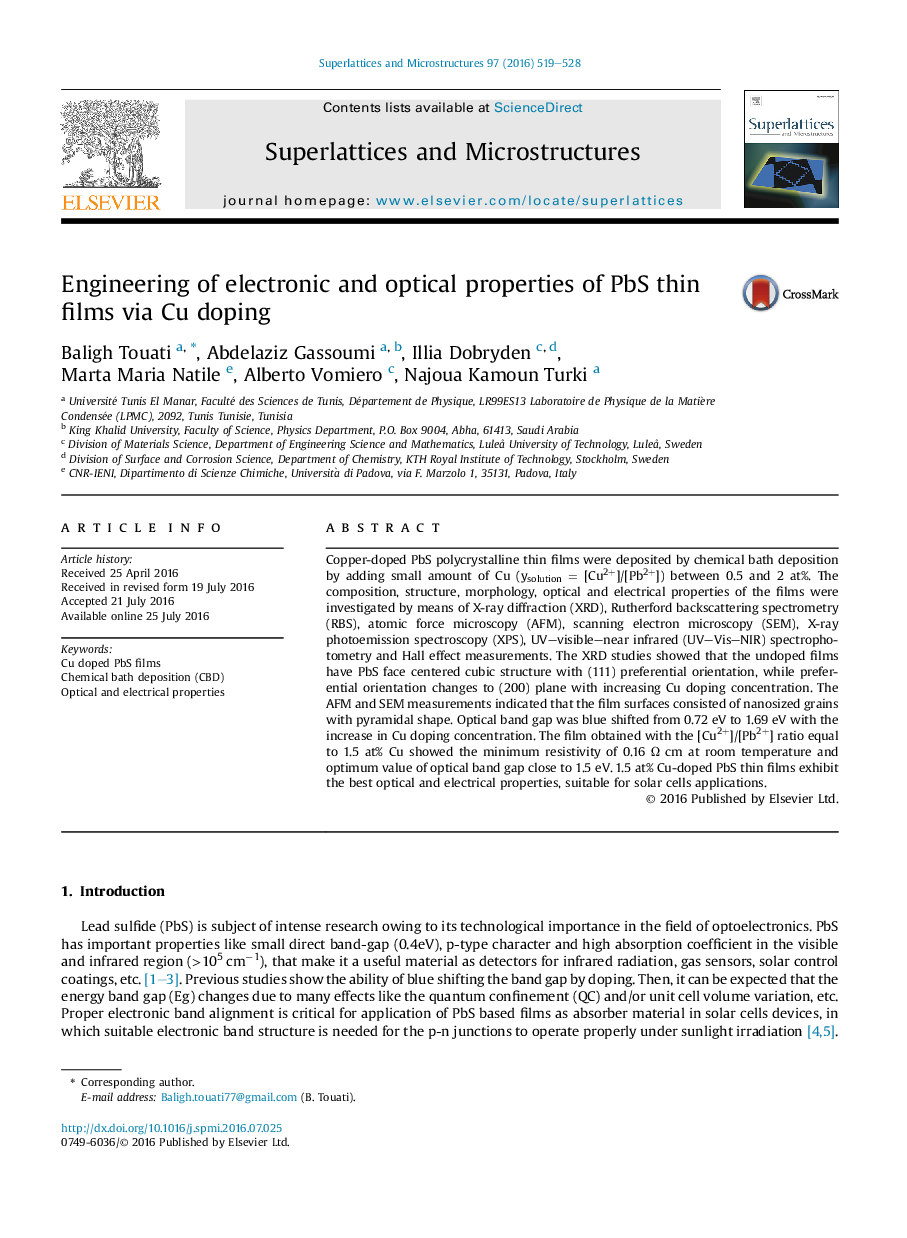| Article ID | Journal | Published Year | Pages | File Type |
|---|---|---|---|---|
| 1552538 | Superlattices and Microstructures | 2016 | 10 Pages |
•PbS:Cu thin films grown on glass substrate were obtained by CBD.•From Rietveld analysis, we note that experimental and refinement results match very well.•Copper incorporation has a strong effect on the surface morphology of the films.•Optical band gap was shifted from 0.72 eV to 1.69 eV by doping process.•An enhancement of the electrical properties was observed after doping.
Copper-doped PbS polycrystalline thin films were deposited by chemical bath deposition by adding small amount of Cu (ysolution = [Cu2+]/[Pb2+]) between 0.5 and 2 at%. The composition, structure, morphology, optical and electrical properties of the films were investigated by means of X-ray diffraction (XRD), Rutherford backscattering spectrometry (RBS), atomic force microscopy (AFM), scanning electron microscopy (SEM), X-ray photoemission spectroscopy (XPS), UV–visible–near infrared (UV–Vis–NIR) spectrophotometry and Hall effect measurements. The XRD studies showed that the undoped films have PbS face centered cubic structure with (111) preferential orientation, while preferential orientation changes to (200) plane with increasing Cu doping concentration. The AFM and SEM measurements indicated that the film surfaces consisted of nanosized grains with pyramidal shape. Optical band gap was blue shifted from 0.72 eV to 1.69 eV with the increase in Cu doping concentration. The film obtained with the [Cu2+]/[Pb2+] ratio equal to 1.5 at% Cu showed the minimum resistivity of 0.16 Ω cm at room temperature and optimum value of optical band gap close to 1.5 eV. 1.5 at% Cu-doped PbS thin films exhibit the best optical and electrical properties, suitable for solar cells applications.
